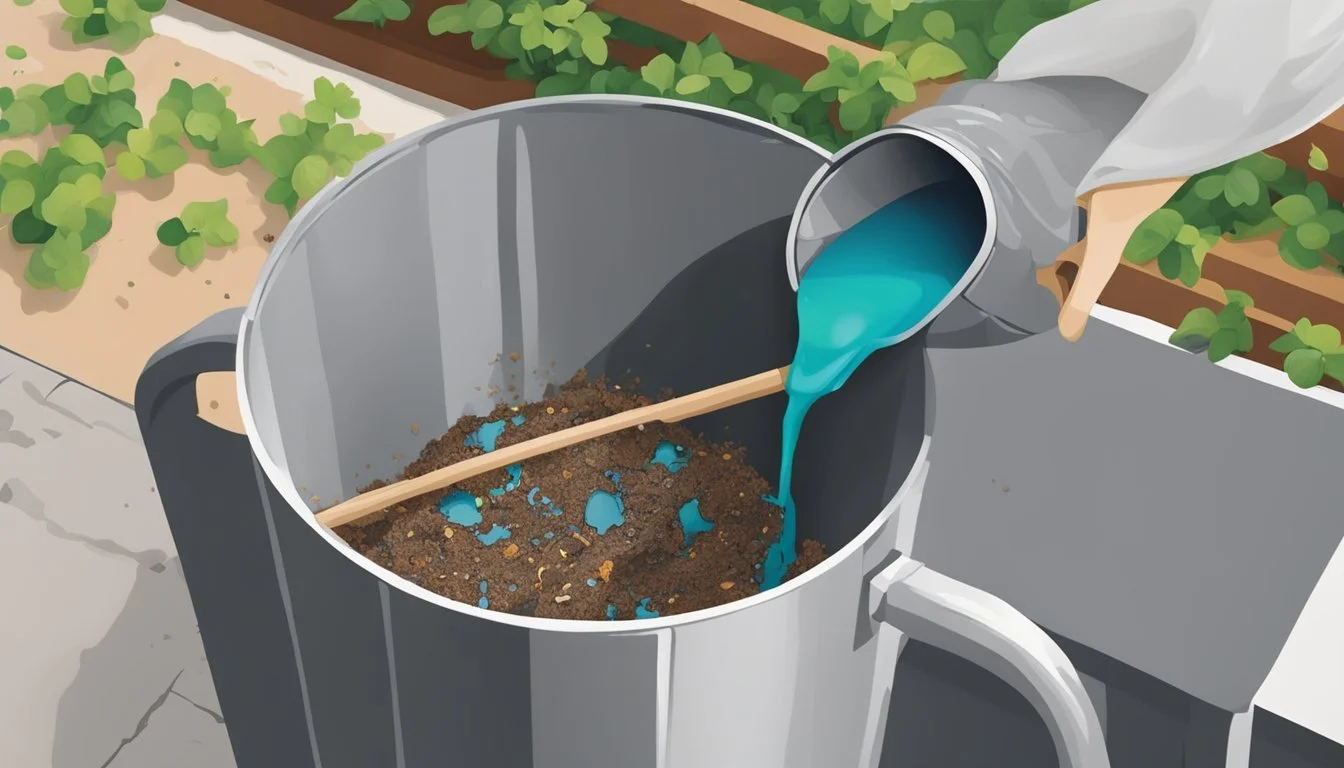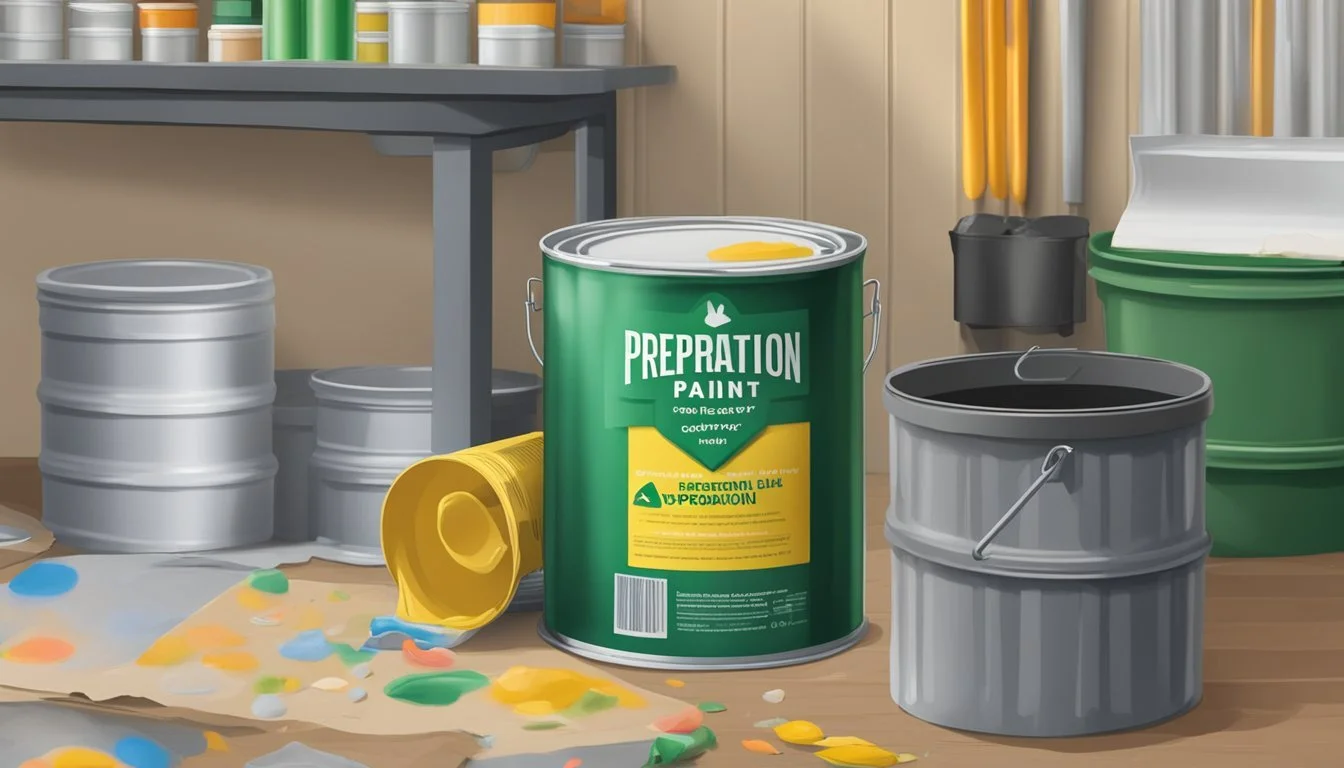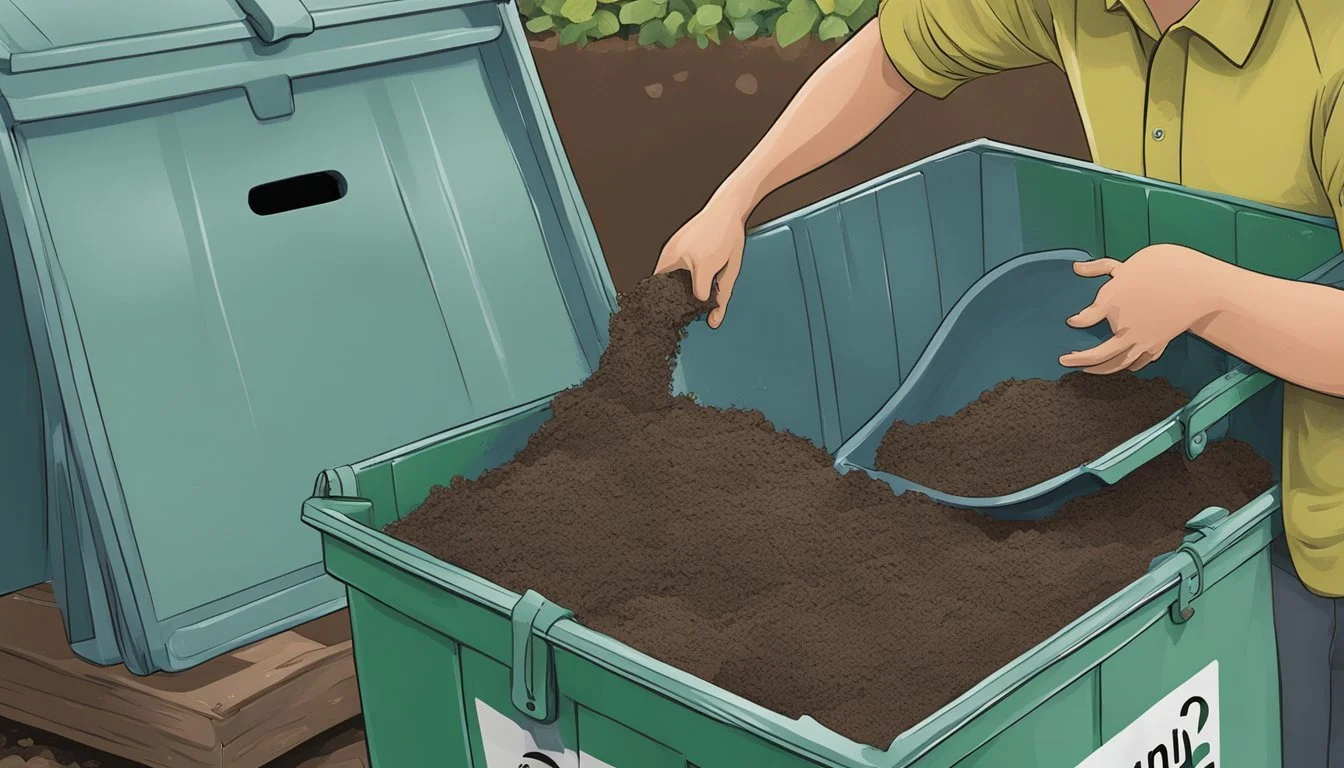Can You Compost Latex Paint?
Understanding Paint Disposal and Composting Rules
Latex paint, commonly used for household projects, consists of a pigment and binder. In the realm of waste management and environmental responsibility, proper disposal of materials such as paint is crucial. Composting is a natural process that breaks down organic matter, returning nutrients to the soil and reducing landfill waste. However, not all substances are suitable for addition to a compost heap.
It is widely understood that latex paint should not be composted. While the latex binder itself is often a type of inert plastic such as polyvinyl acetate or an acrylic polymer, which is unlikely to break down in compost, the concern lies with the other components. The pigments in latex paint may contain materials that could be harmful to the composting process and subsequently to the soil and plants.
When it comes to the proper disposal of leftover latex paint, many regions offer specific guidance. Dry latex paint can often be disposed of with regular waste, provided the paint is thoroughly dried, typically by using absorbent materials such as kitty litter or left open to air dry. Recycling programs are also available in some areas, where paint can be dropped off for proper processing. It is essential for the longevity and health of the environment that latex paint is handled responsibly, and it should be kept out of compost to avoid contaminating the organic material.
Understanding Latex Paint
Latex paint is a common household product used for various painting projects, and its disposal raises environmental concerns. This section focuses on the properties of latex paint and the best practices for disposal, as well as the challenges in composting and recycling.
Composition and Properties
Latex paint is predominantly water-based and contains a mixture of synthetic polymers and natural resins. Its composition renders it less toxic than oil-based paints, making it a popular choice for indoor environments.
Differentiating Latex and Oil-Based Paints
The primary difference between latex and oil-based paints lies in their solvents. Latex paints use water as a solvent, while oil-based paints use organic solvents, which result in higher levels of volatile organic compounds (VOCs).
Environmental Impacts of Latex Paint
Though not classified as hazardous waste, improper disposal of latex paint can contaminate soil and groundwater. When disposed of in a landfill, the organic chemicals in latex paint may harm the biological systems.
Regulations and Guidelines
The Environmental Protection Agency (EPA) provides guidelines on latex paint disposal. The EPA does not consider latex paint as hazardous waste; however, it recommends special disposal methods to minimize environmental impact.
Safe Disposal Methods
To dispose of latex paint safely, it should be dried out completely before disposal. Adding materials such as kitty litter can accelerate the drying process. Once dried, it can be placed in household trash with the lid removed.
Recycling Programs for Latex Paint
Community recycling programs may accept latex paint for recycling. Some services convert recyclable latex paint into new products, reducing the amount of waste sent to landfills.
Composting Challenges for Paint Products
Composting latex paint is not advisable as it may release toxic chemicals into the compost, which could be harmful when used in gardens. The presence of paint in compost can also introduce pollutants and pesticides into the environment.
Preparation for Latex Paint Disposal
Proper disposal of latex paint requires specific preparation steps to ensure that the material can be disposed of safely without harming the environment or creating a mess. It is especially important to distinguish between usable and unusable paint before proceeding with disposal methods.
Proper Storage and Handling
Before disposing of latex paint, one should ensure that the paint has been stored correctly. Paint should be kept in a cool, dry place with the lid securely fastened to prevent drying out. Proper storage helps prevent spills and preserves the quality of the paint for future use. It is essential to keep latex paint containers out of reach of children and animals to avoid accidental ingestion or contamination.
Identifying Usable Paint
To determine whether latex paint is recyclable or needs to be disposed of, inspect its condition. If the paint flows freely when stirred and remains consistent in color and texture, it can still be used or donated. Usable paint should be kept for future projects or given to community centers or non-profits who may have a need for it.
Solidifying Remaining Latex Paint
When left with paint that cannot be reused, one must solidify it before disposal. Adding materials like cat litter, sand, or sawdust to the latex paint will help to absorb and solidify the liquid. This process involves:
Removing the lid and adding the absorbent material.
Stirring the mixture until it has a thick, oatmeal-like consistency.
Allowing the paint to sit uncovered until it becomes fully solidified.
Once solid, it can be placed in a cardboard box and disposed of in the regular trash.
One should never dispose of liquid latex paint directly by pouring it down drains or into the ground – it is harmful to the environment and can create unnecessary mess. Always ensure the paint is completely dry, with the lid off, before disposal.
Alternatives to Disposal
Latex paint should not be composted due to its chemical composition, but there are several responsible alternatives to outright disposal that can prevent it from ending up in a landfill.
Creative Reuses for Latex Paint
Repurposing latex paint for new craft projects or community murals can give it a new life. Residents can explore various DIY projects where paint can be used, such as refurbishing old furniture or creating artwork.
Donating Usable Paint
Latex paint that's still usable can be donated to local theaters, schools, or community centers. Friends or family might need paint for their own projects, or you could offer it on platforms like Craigslist.
Participation in PaintCare Program
In regions where PaintCare offers services, individuals can recycle latex paint through their program. This app can help locate nearby drop-off sites.
Hazardous Waste Collection Events
Residents can bring latex paint to special collection events for hazardous waste disposal. These events, often organized by the community, provide safe handling and recycling options.
Services Offered by Retailers and Manufacturers
Some retailers and manufacturers offer take-back programs for latex paint, which is then properly recycled or disposed of, often for a minimal fee.
Professional Disposal Services
If other options are not viable, professional disposal services may be available. They usually address the paint disposal in full compliance with regulations, but a service fee may apply.
Safe Composting Practices
In composting, it is crucial to understand which materials are appropriate to add to your compost pile and how to handle potentially harmful substances such as paint.
Suitable Materials for Composting
Organic waste forms the cornerstone of any successful composting endeavor. This includes a mix of green materials like vegetable scraps, fruit peels, and coffee grounds, which are nitrogen-rich, and brown materials such as dry leaves, cardboard, and sawdust, which provide a source of carbon. Yard waste like grass clippings or garden prunings can also be included. Materials like kitty litter and sawdust should be free from chemicals or waste before considered as compostable. The EPA encourages composting as a means to reduce landfill waste, promoting it as an essential service for community sustainability and recommending that residents take part in recycling and composting practices.
Composting Non-Toxic Organic Paints
When it comes to composting paint, only certain types of paints are suitable. Water-based paints, such as acrylic latex labeled non-toxic to humans and the environment, can be added in small quantities. This is because the paint would break down into harmless components in a well-managed compost bin. However, the presence of paint should not overwhelm the pile, ensuring toxic elements do not accumulate and maintaining the safety of the resulting compost for use in the garden.
Avoiding Toxic Elements in Compost
It's imperative to avoid adding hazardous waste to a compost pile. This includes most types of paint, especially oil-based variants, which may contain heavy metals and other toxic chemicals. These substances can leach into the soil and become absorbed by plants, potentially entering the food supply. Furthermore, they defy recycling and disposal regulations set to protect community health. Residents should instead opt for designated hazardous waste disposal services to handle such materials responsibly, ensuring they do not end up in landfills or your garden. Always refer to local regulations or the EPA guidelines for the safe disposal of hazardous waste like oil paints and pesticides.
Legislation and Community Involvement
Legislation plays a crucial role in the proper disposal of latex paint, while community-driven initiatives bolster the effectiveness of these laws, ensuring eco-friendly practices for residents.
Importance of Legislation in Paint Disposal
Legislation at both state and federal levels has been established to manage the proper disposal and recycling of latex paint. The Environmental Protection Agency (EPA) sets guidelines that are then adapted by individual states to meet local requirements. Regulations not only mandate how paint should be disposed of but also promote the paint recycling to reduce environmental impact. For instance, states may pass legislation that includes a fee on paint purchases to fund recycling programs, ensuring that residents have accessible disposal services.
Community Programs and Initiatives
Community involvement through local programs and services provides residents with the opportunity to engage in and benefit from paint recycling initiatives. Paint recycling programs, often launched in collaboration with manufacturers and retailers, establish a network of drop-off sites where residents can recycle latex paint safely. These programs ensure that a significant percentage of the community has convenient access to these facilities, thereby making recycling and disposal services highly effective.
By following EPA regulations and leveraging community services, the process of latex paint disposal is streamlined, ensuring environmental protection and resource conservation.
Conclusion
Latex paint typically refers to water-based paint, which contrasts with oil-based alternatives. Composting latex paint is not advised because it may contain chemicals that are harmful to the composting process and potentially to the environment. The presence of polymers such as styrene and butadiene in some latex paints can lead to the release of undesirable compounds like nitrogen oxides and hydrocarbons during decomposition.
When considering the disposal of unused latex paint, it should not be treated as organic waste. While natural latex could theoretically be biodegradable, latex paint usually contains additives and preservatives that may interfere with the composting process or harm the biome of the compost pile. Therefore, recycling or proper disposal is crucial.
Recycling Options: Many communities offer paint recycling programs. They salvage usable paint and properly dispose of the remainder, adhering to EPA guidelines, ensuring environmental safety.
Proper Disposal: For small amounts, homeowners can dry out the paint before disposal, using cat litter or paint hardener. Once solidified, they may dispose of it with regular trash. However, they should always check local regulations as some areas may have specific requirements.
In Summary:
Do not compost latex paint.
Recycle via community programs.
Follow local disposal regulations.
Refer to EPA guidelines for environmental concerns.
Homeowners should always prioritize recycling and adhere to local and federal guidelines to minimize environmental impact. The EPA provides extensive resources and information on proper paint disposal procedures to ensure both compliance and environmental stewardship.







